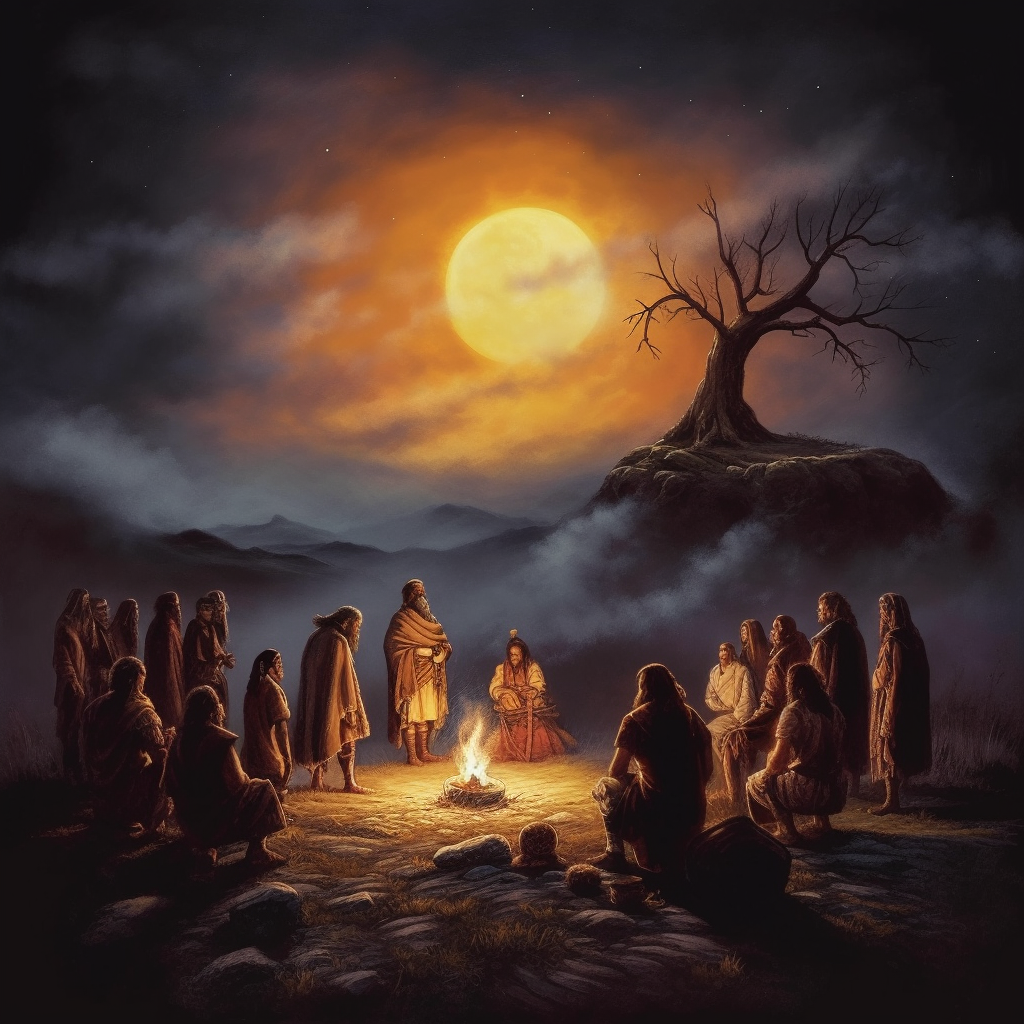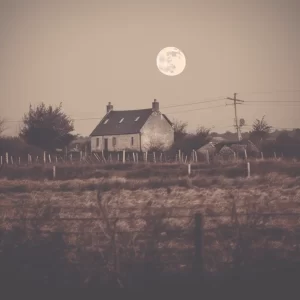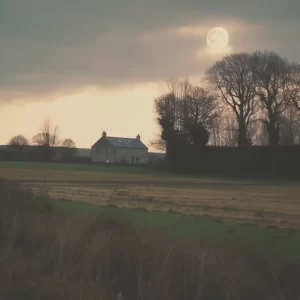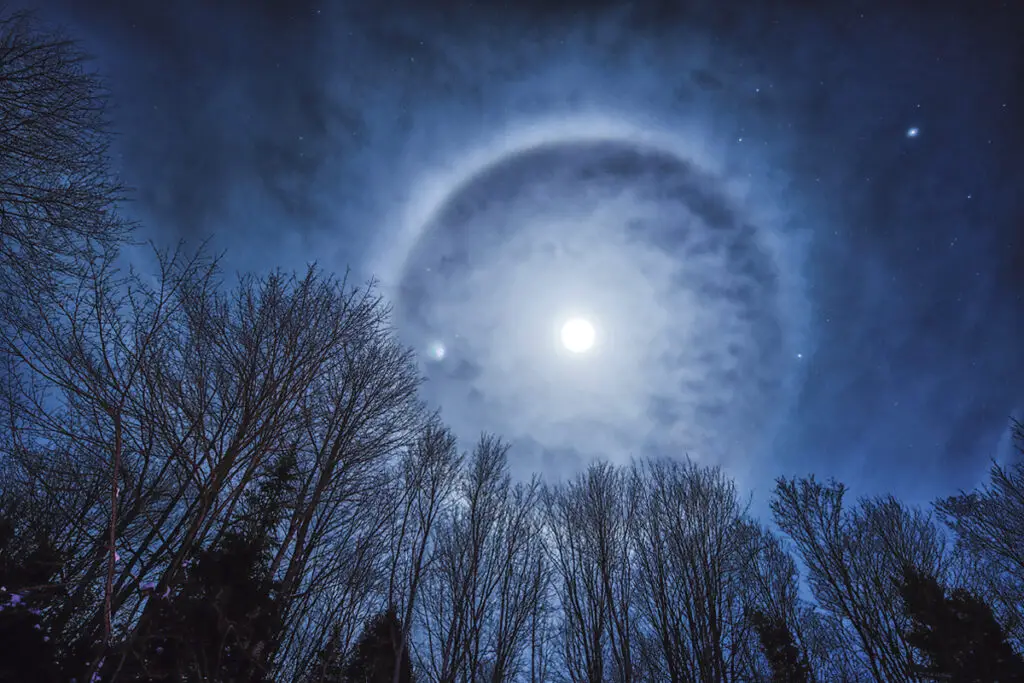The cycles of the moon and stars have been an essential part of the Celtic people’s lives for centuries.They used the celestial bodies to guide their daily activities, from planting crops to marking religious ceremonies.
Have you wondered what were the Celtic Full Moon Names? Find out below!

Celtic Full Moon Names
The ancient Celts had a rich tradition of associating the cycles of the moon with specific names and meanings.
These names and meanings varied across different Celtic regions and tribes.
In January, the full moon is known as the Quiet Moon, Wolf Moon, or Cold Moon, depending on the Celtic tribe.
It’s a time of rest and reflection, preparing for the upcoming harvest season.
The February full moon name is called the Moon of Ice, Hunger Moon, Snow Moon, or Quickening Moon.
This is the season of Imbolc, a time to set intentions for the coming year and focus on personal growth.
March’s full moon name is the Seed Moon, Wind Moon, Storm Moon, or Worm Moon. It’s the season of Ostara, celebrating the start of spring and new beginnings.
The April full moon is the Growing Moon or Pink Moon, representing the growth of love and the harvest season.
One of our favorite Celtic full moon names is Flower Moon, which is May’s full moon. It is a time to tend to your own life and ensure that the seeds you’ve planted continue to grow.
June’s full moon is the Mead Moon or Horse Moon, a time of celebration and abundance. The newlywed couple was believed to drink mead for one full moon cycle to promote health, prosperity, and fertility.
July’s full moon is the Claiming Moon or Horse Moon, a time to reflect on life and bring more positivity into it.

The August full moon is the Grain Moon or Dispute Moon, a time of feasts and festivals and resolving disputes between neighbors.
September’s full moon is the Singing Moon, Harvest Moon, or Wine Moon. It’s a time to celebrate Mabon and the balance of light and dark and give thanks for all blessings in life.
Another one of our favorite Celtic full moon names is Harvest moon. It is one of the names of the October full moon.
Other Celtic full moon names for October are the Harvest Moon, Seed Fall Moon, and Hunter’s Moon. It’s a time to honor loved ones who have passed on and do physical and spiritual house cleaning. This is most embodied through the Celtic festival of Halloween.
November’s Celtic full moon names are the Dark Moon or Oak Moon, a time to cultivate healthy habits and let go of negativity.
Finally, December’s Celtic full moon names are the Cold Moon, Singing Moon, and Wolf Moon. It’s a time to celebrate the Winter Solstice, spend time with family, and reflect on the beginning of winter.
The Celtic people not only observed the cycles of the moon but also used them for navigation and timekeeping.They were skilled astronomers and mapped the stars to create constellations and understand the movement of the planets.
The stars were particularly important to the Celts during their travels as they were used to navigate during the night.
The Celts also wrote about the moon and stars in their mythology and folklore, as many Celtic stories and legends featured characters who had a close connection with the celestial bodies.
As you can see from the Celtic full moon names above, they often named them after events, such as harvest season. This is typical of many ancient societies as they often had big celebrations during these periods.
Word For Moon In Irish?
The word for moon in Gaelic Irish is gealach.

Celtic Full Moons – FAQ’s
What are the Celtic Full Moon Names, and how do they vary across different tribes?
The Celtic Full Moon Names refer to specific names and meanings associated with the full moon in the Celtic tradition, which vary across different Celtic regions and tribes.
For example, January’s full moon is called the Quiet Moon, Wolf Moon, or Cold Moon, while September’s full moon is named the Singing Moon, Harvest Moon, or Wine Moon. Each month’s full moon has names corresponding to particular themes, rituals, or natural events significant to that time of the year.
How did the ancient Celts use the cycles of the moon in their daily lives?
The Celtic people used the cycles of the moon to guide various aspects of daily life, from planting crops to marking religious ceremonies.
The specific names and meanings associated with each full moon were related to particular events, such as the harvest season, and were used to set intentions, celebrate new beginnings, and reflect on personal growth and positivity.
Can you provide more information about the connection between the Celtic people and celestial bodies like stars?
The Celtic people were skilled astronomers who mapped the stars to create constellations and understand planetary movements. They used the stars for navigation during night travels, and many Celtic myths and legends featured characters closely connected to celestial bodies.
These practices underline the significant role that the moon and stars played in Celtic culture, both practically and symbolically.
What significance did the Celtic full moon names have to festivals like Halloween?
The naming of the full moons often corresponded to specific events and celebrations, such as harvest season.
Halloween is an example of a festival occurring around this pivotal time, reflecting the interconnectedness between the Celtic people’s agricultural practices, spiritual beliefs, and communal celebrations.
How did the full moon names in Celtic tradition reflect the natural and social environment of the Celts?
The full moon names were associated with specific natural events, cultural practices, and spiritual beliefs prevalent during different months of the year. From the Quiet Moon reflecting rest and reflection to the Grain Moon signifying feasts and festivals, these names provide insights into the Celts’ seasonal activities, rituals, and societal values. The moon names served as both symbolic expressions and practical guides for the Celts’ daily lives and communal interactions.

